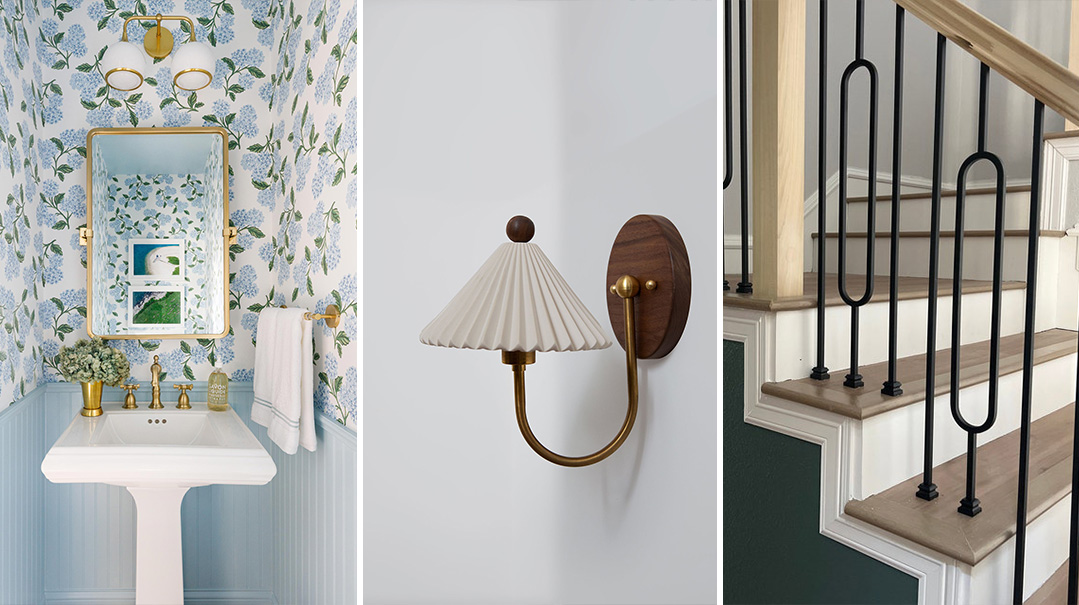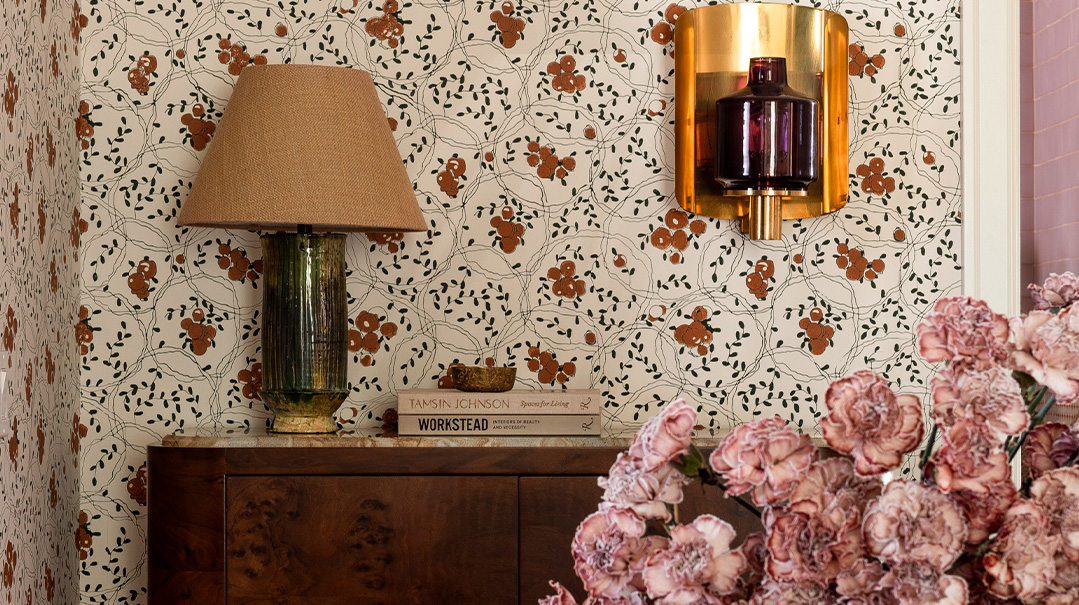Green Thumb
| June 15, 2021A quick little guide to some of today’s most adorable indoor plants
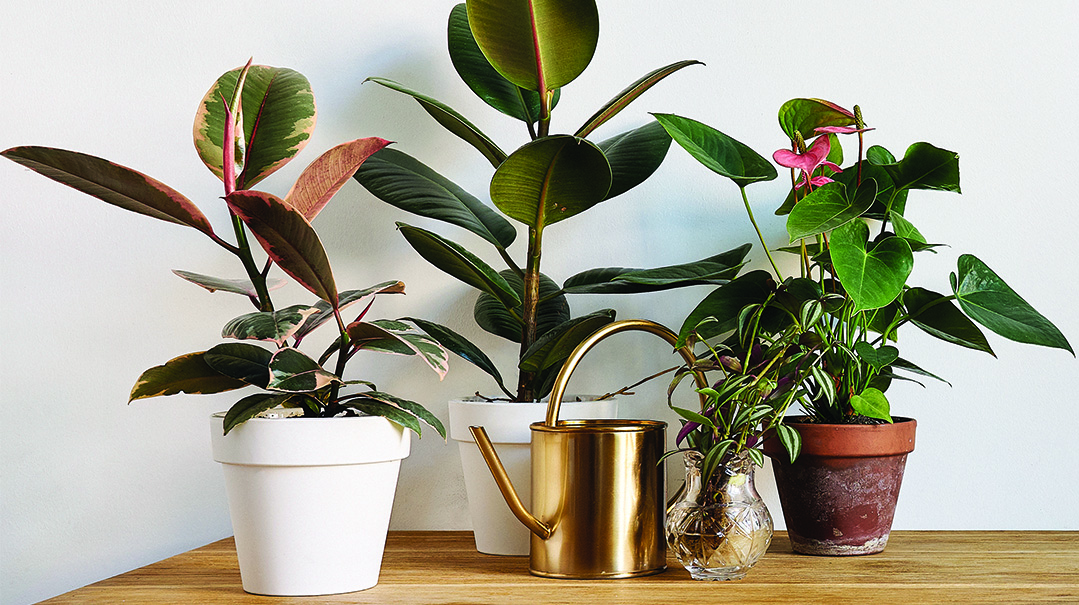
I can’t be alone in noticing how the same few plants keep showing up in styled home photos and in exterior landscaping. While the names may evade most of us, the world of greenery is vast and has its own hierarchy of trends. Integrating those little moments of sunshine has a way of pulling space together, regardless of all the other components that surround them. Let’s learn a little bit about how to bring that airy feeling inside, and how to actually keep these little guys alive.
Tip: Refer to this article at your local florist or nursery so you can feel cute and current and like you’re deep in the Plantisphere with us, too.
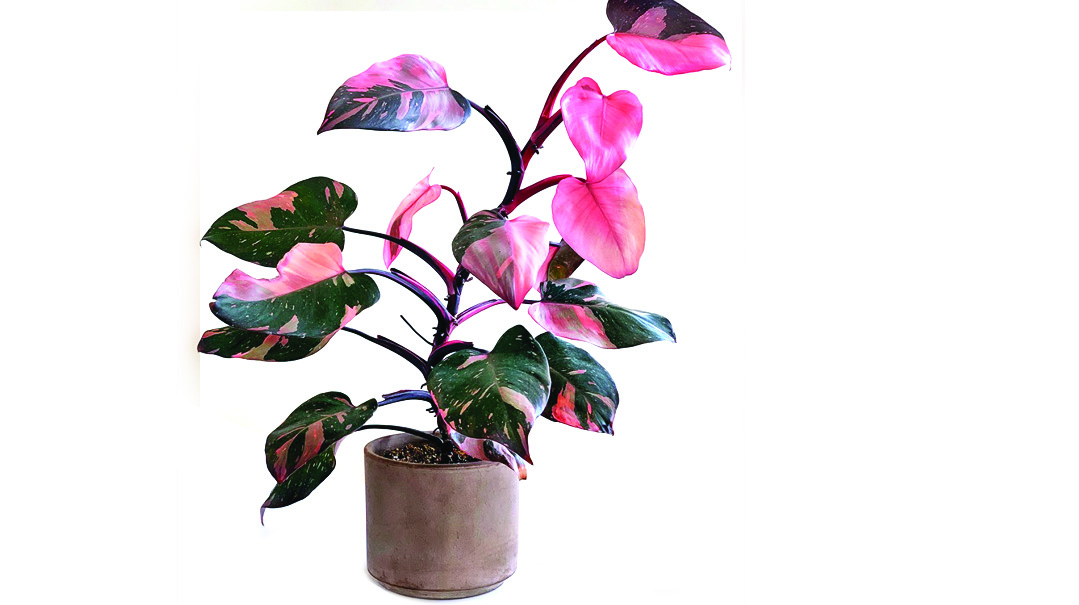
Philodendron,
A.K.A Pink Princess
Maintenance: 1
Description: If there were ever a plant that’s perfect for people who are terrible with plants, it’s this guy. Not only is it easy to keep healthy, but it also comes in a variety of beautiful shades, like the Pink Princess we’re discussing here, which was one of those plants that shops couldn’t get rid of a few years ago. Now, they’re almost impossible to find… typical.
Sun/care tips: Philodendrons do just fine in low light conditions, one of the best aspects of their versatility. You can tell when a philodendron needs water because its leaves will appear wilted. When watered, the plant will reward you with a perky appearance.
Pro tip: Philodendrons also thrive in containers with just water. Monitor the water closely because your philodendron may drink it faster than you anticipate. One thing to note is that once a plant is used to living in either soil or water, it doesn’t always do well being transferred to the other medium.
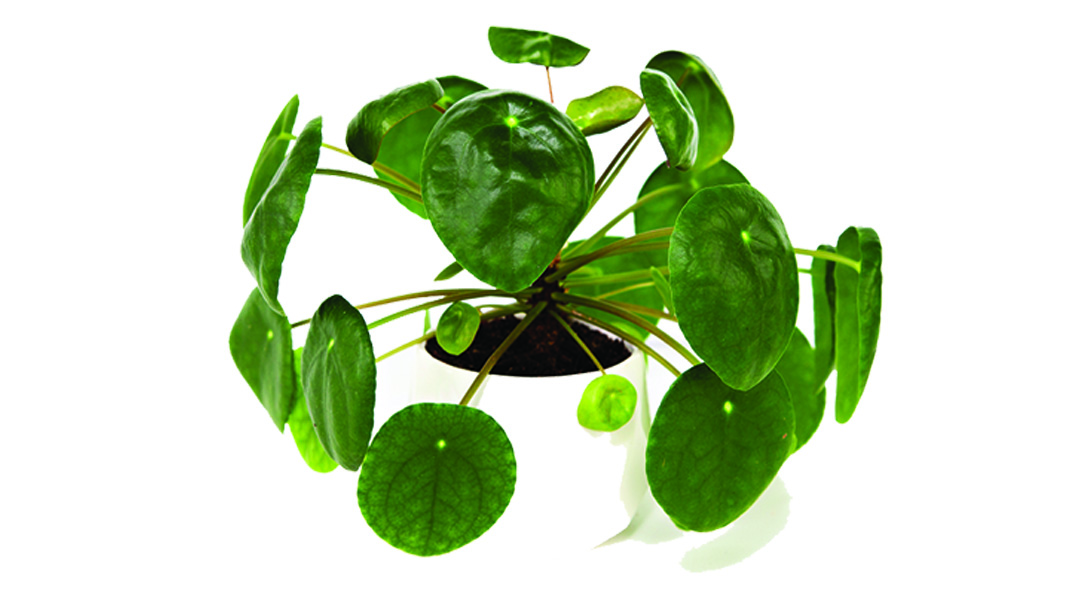
Pilea Peperomioides,
A.K.A the Friendship Plant or the Chinese Money Plant
Maintenance: 1
Description: Pilea peperomioides is an evergreen perennial plant with shiny, dark green, circular leaves that resemble like little lily pads.
Sun/care tips: Pilea plants love indirect sunlight and grow fast. In fact, if you add this plant to your space, you’ll likely find yourself needing to rotate it often because it will bend its leaves towards the light source.
Watering tips: The pilea likes to dry out in between waterings, so when you water it, never let it sit in water. After watering, make sure to empty the excess water that catches in your bottom dish. If the dirt stays wet or soggy for too long, the roots will rot, which can lead to the death of the plant.

Snake Plant,
A.K.A. Sansevieria
Maintenance: 2
Description: Snake plants are perfect for beginner gardeners, as they’re almost impossible to kill. An ideal container plant, they’re excellent in a grouping and will grow equally well on the floor or on tabletop displays. These plants are also drought-resistant.
Watering tips: Be careful not to overwater your snake plants, as this can lead to rotting. Make sure the soil is dry before watering again. These plants can even go two months between waterings in the winter months. In warmer months, water every three to four weeks.
Summer plant: Snake plants thrive in warm weather and will struggle in very cold conditions.

Fiddle-Leaf Fig Plant,
A.K.A Ficus Lyrata
Maintenance: 3
Description: The fiddle-leaf fig is a popular indoor plant featuring very large, heavily veined, violin-shaped leaves that grow upright.
Sun/care tips: Fiddle leaf trees hate drafts, so choose an area that isn’t directly in line with an exterior door, a drafty window, or an air vent. They also thrive in very bright, indirect light. Situate your plant in a bright room or close to a window, but not where the light will touch it directly.
Once you’ve chosen the perfect place, don’t move it! Fiddles are creatures of habit and will flourish once they’ve found a happy, sunny home. Once a week, when you water, turn the plant slightly so that the leaves receive equal sunlight and don’t start to grow toward a light source.
Give It Time: The drive home and relocation process may put your plant into shock, but you likely won’t notice it for a month or two. If leaves start to look brown or sad at the end of month one, check to make sure you haven’t overwatered and that the plant is getting adequate sunlight. If neither of those is the culprit, assume the tree needed time to adjust to its new environment.
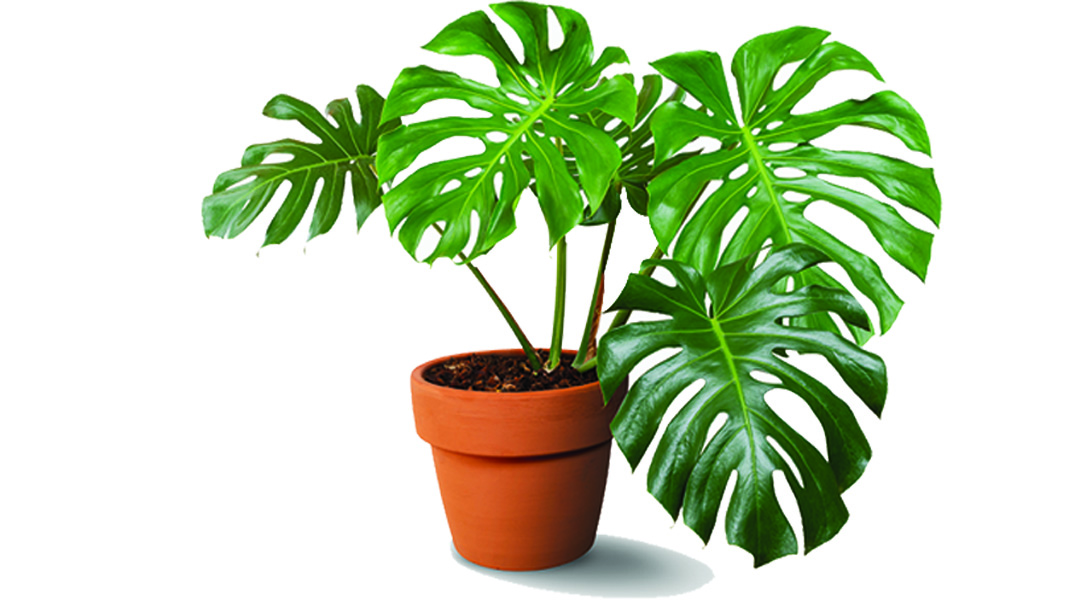
Monstera,
A.K.A the Swiss Cheese Plant
Maintenance: 3
Description: This little guy is the trendiest of all with its leaves appearing on art prints, upholstery, stationery, and everything in between. It gives the room it inhabits a special tropical vibe, and for good reason — the Monstera plant is native to the Central American rainforest.
Sun/care tips: Monstera thrives in bright to medium indirect light and is not suited for intense, direct sun but can be acclimated to withstand it.
Watering tips: Water every one to two weeks, allowing soil to dry out between waterings. Expect to water more often in brighter light and less often in lower light.
Pro tip: Monsteras can benefit from filtered water or water left out overnight before using. Consider incorporating a fine-mist mister or humidifier to boost humidity level indoors.
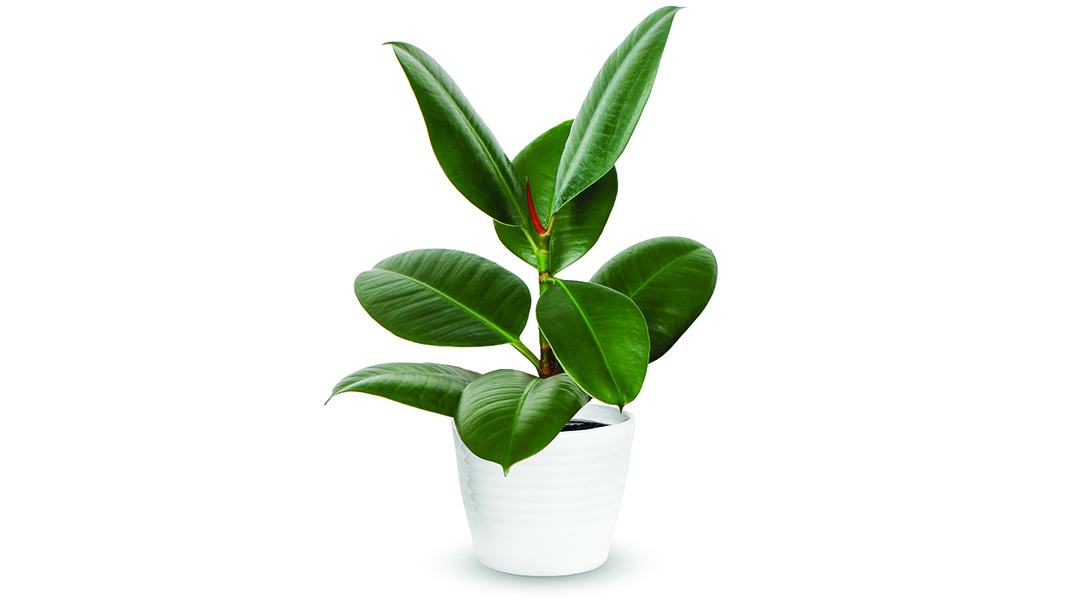
Ficus Elastica,
A.K.A the Rubber Plant
Maintenance: 5
Description: This plant’s gorgeous deep green or ruby leaves look great in any space, and they like direct morning sun. They’re also susceptible to dryness, so be prepared to water, water, and water some more.
Watering Tips: They require a very humid, moist environment. Spray rubber plants regularly, especially if the plant is surrounded by heated air. During the growing season, which is during spring and summer, water moderately with lukewarm water. Reduce watering during the winter, keeping the soil moist but being careful not to overwater, as plants require less water during their natural resting season.
Myth Busted: Although a common misconception among those who nurture rubber plants is that yellow leaves are a sign of too little watering, the opposite is the case. If leaves begin to yellow, wilt, or fall, take a backseat on the watering, ’kay?
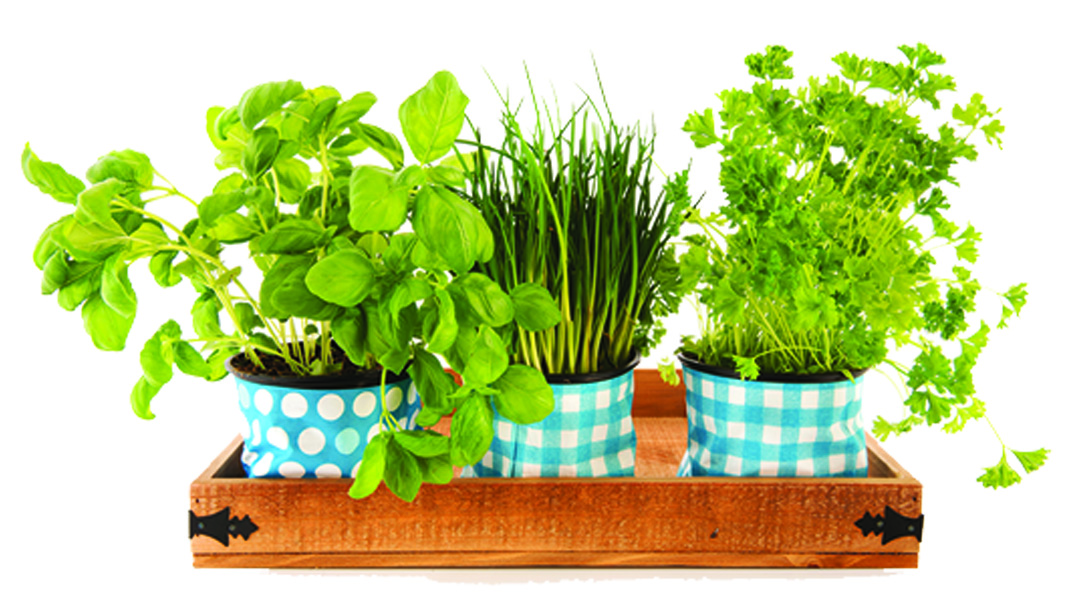
Home Herb Gardens
Maintenance: 5
Description: “Do you want some mint tea? Sure, let me snip this for you,” is probably the most fabulous statement I can ever dream of saying.
Herbs growing indoors need at least six hours a day of sunlight to grow well. If they don’t get enough sun, they’ll become spindly and start to lose their flavor. Place your indoor herb garden in the sunniest spot you can find. If you feel that spot won’t provide enough light, supplement the sunlight with a fluorescent bulb placed less than a foot from the herbs.
Sun/care tips: You may need to rotate the container that the indoor herb garden is growing in so that all of the herbs have an even amount of sun and do not grow crooked.
Watering tips: Indoor herb gardens need to be watered regularly. They should never be allowed to dry out, but you should also not overwater them. Check your indoor herb garden daily and water it when the top of the soil just starts to feel dry — though if you stick your finger into the soil, the lower layer will still be damp.
(Originally featured in Family Room, Issue 017)
Oops! We could not locate your form.


